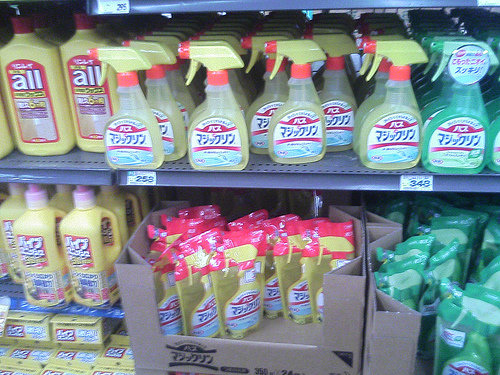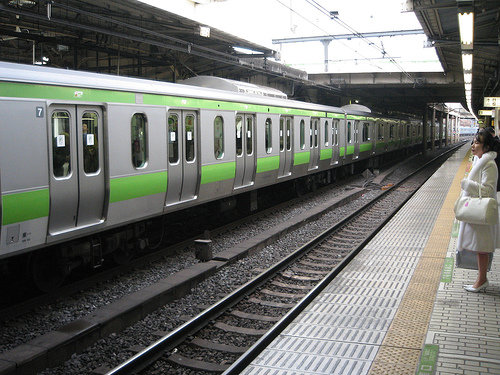A show I like a lot is NHK’s Eigo de Shaberanaito (“I must say it in English”), which helps motivate Japanese learners of English by, say, showing actresses with no special language ability taking on difficult challenges like interviewing famous Hollywood stars who visit Japan. In last night’s episode, a Japanese fan asked Patrick, the token gaijin-who-can-speak-Japanese- really-well you see on a lot of television shows, how he learned to speak the language so well. His answer was that, to him, Japanese was a very “formulaic” language, with a simple sentence structure that’s straightforward and “markers” for the various parts of the sentence, such as the subject (wa, in Japanese は), the object (o, を), the predicate (ni, に), and so on. I agreed with this statement 100% — the grammar of Japanese is almost mathematical in its directness, and from my very first year at SDSU I found it a pleasant challenge, even taking into account the parts of sentences that get omitted because everyone understands that information already. Something that helped me a lot in the beginning was memorizing a particular sentence then “swapping out” the subject, object, etc. with other words, until I had internalized it.

Japan is truly the land of contradictions, and sometimes it seems impossible to know the real Japan. Take the issue of the environment, for example. On the one hand, Japan is an ultra-industrialized country that has sacrificed a huge portion of its limited land mass to the twin Gods of Asphalt and Conrete, covering much of the country with roads and dams and Shinkansen tracks. An over-reliance on public works to stimulate the economy has led to a staggering amount of waste, with many projects of dubious benefit, such as mummifying the sides of mountains with concrete to guard against possible rockslides. When you point out that Japan has caused harm to its environment, the argument is made that the country’s large population — 1/2 that of the U.S., crammed into 1/25 the space, or even less if you take away all the uninhabitable mountain areas — makes it impossible for Japan to be as concerned with environmental issues as the U.S. or Europe, and the inevitable Japanese mantra shigata ga nai (it can’t be helped) is trotted out. And yet, there are many ways the Japanese show real vision when it comes to the environment. Gomi (garbage) is always separated into “burnable” and “non-burnable,” with the former incinerated in high-tech facilities that burn the trash and trap most of the harmful gases that result — and heat the local town’s swimming pool at the same time. Cars are taxed annually on the sizes of their engines, with a gas-guzzling Toyota Crown owner paying around $800 per year while owners of fuel efficient small cars or hybrids pay a mere $30. Every few days a guy drives around our neighborhood calling for old newspapers to recycle, which he’ll trade rolls of new toilet paper for. And when you go to the store to buy more Charmy Green dishwashing liquid, you have the choice between buying a regular bottle or a refill pack that costs slightly less and doesn’t add to the gomi problem.
Want to know how to fluster a Japanese person? Ask them pronounce difficult English words, such as the word “jewelry,” which twists L and R sounds in unnatural ways. Other words the J-List staff reports as being difficult are “McDonald’s” (which takes six syllables to say in Japanese, Makudonarudo), “strawberry daiquiri” and that old standby, “election.” There are two words for love in Japanese, too, and if you want to have some fun ask your Japanese friends what the difference between them is — they’ll stumble as they try to come up with a way to explain the difference. The two words are koi (恋, which usually describes romantic love) and ai (愛, a higher kind of love that is used for family or anyone who’s very dear to you, or the steady, slow-burning love of marriage). Incidentally, these two words are combined into a compound word to make a general word for love, which is ren’ai (恋愛).
The “top 20” links on the main J-List and JBOX.com pages are a good way to browse the most popular products we sell, allowing you to quickly see what other manga, DVD, magazine, photobook, toy, Japanese study and other items other J-List customers are buying that week. Now we’ve updated our scripts so that you get to see the top 50 products in each category, a great way to see the most popular products neatly organized for you. We also recommend hitting the “3 days update” link which makes it easy to browse items updated in the last 3 days only, so you can see what’s new and updated at J-List!















